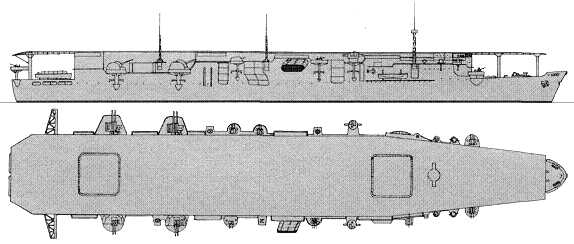
NAVYPEDIA
 Support the project with paypal
Support the project with paypal
Photo

Taiyo
Ships
| Name | No | Yard No | Builder | Laid down | Launched | Comp | Fate |
|---|---|---|---|---|---|---|---|
| 春日丸 [Kasuga Maru], 8.1942 - 大鷹 [Taiyo] | Mitsubishi, Nagasaki // Sasebo K K | 6.1.1940 | 19.9.1940 | 15.9.1941 | sunk 18.8.1944 | ||
| 八幡丸 [Yawata Maru], 8.1942 - 雲鷹 [Unyo] | Mitsubishi, Nagasaki // Kure K K | 14.12.1938 | 31.10.1939 | 7.1940 // 31.5.1942 | sunk 16.9.1944 | ||
| 冲鷹 [Chuyo] (ex-新田丸 [Nitta Maru]) | 750 | Mitsubishi, Nagasaki // Kure K K | 9.5.1938 | 20.5.1939 | 3.1940 // 25.11.1942 | sunk 4.12.1943 |
Technical data
| Displacement standard, t | 17830 |
|---|---|
| Displacement full, t | 20000 |
| Length, m | 168.0 pp 173.7 wl 180.2 oa |
| Breadth, m | 22.7 wl 23.5 fd |
| Draught, m | Taiyo: 8.00 Unyo, Chuyo: 7.74 |
| No of shafts | 2 |
| Machinery | 2 sets Mitsubishi geared steam turbines, 4 boilers |
| Power, h. p. | 25200 |
| Max speed, kts | 21 |
| Fuel, t | oil 2250 |
| Endurance, nm(kts) | 6500(18) |
| Armament | Taiyo: 6 x 1 - 120/45 10-shiki, 2 x 2 - 25/60 96-shiki, 2 DCR(8), 27 aircraft (A5M, A6M fighters, D1A, D3A diving bombers, B5N torpedo bombers) Unyo: 4 x 2 - 127/40 89-shiki, 2 x 2 - 25/60 96-shiki, 2 DCR(8), 30 aircraft (A6M fighters, D3A diving bombers, B5N torpedo bombers) Chuyo: 4 x 2 - 127/40 89-shiki, 2 x 2 - 25/60 96-shiki, 2 DCR(8), 30 aircraft (A6M fighters, D3A, D4Y diving bombers, B5N torpedo bombers) |
| Complement | Taiyo: 747 Unyo, Chuyo: 850 |
Air group
| Year | Fighters | torpedo bombers |
|---|---|---|
| 1942 | 11 A6M2 | 16 B5N |
Standard scale images

Unyo 1943

Chuyo 1943
Graphics
Aircraft facilities
(fd - 3,807 or 4,042m², ha ? m² / ? m³): Flight deck: 162.0(Taiyo, Unyo) or 172.0(Chuyo)x23.5 m. There was hangar (91.5x?x?m). There were 2 lifts (12.0x13.0m). Aircraft fuel stowage: ?.
Project history
Former fast passenger liners of NYK Line Kasugava Maru, Yawata Maru and Nitta Maru (17100BRT, 22.2kts). Two latter were completed in 1940, but next year have been requisitioned and transferred to Kure N Yd for reconstruction. Kasugava Maru was received by Navy incomplete; her conversion to carrier was conducted on Sasebo N Yd.
First escort aircraft carriers of Japanese Navy had simplified construction. The hull under upper deck and machinery almost have not undergone changes. Instead of the sheared superstructures the flight deck was fitted, lower there was arranged a single-level hangar. Ships were supposed to be used mainly as aircraft transports.
Modernizations
summer 1943, Taiyo, Unyo: - 2 x 2 - 25/60; + 8 x 3 - 25/60 96-shiki, 1-shiki 2-go radar
7/1943, Chuyo: + 6 x 3 - 25/60 96-shiki, 5 x 1 - 13.2/76, 1-shiki 2-go radar
5/1944, Taiyo: flight deck was lengthened to 172.0 m; - 6 x 1 - 120/45; + 4 x 2 - 127/40 89-shiki, 4 x 3 - 25/60 96-shiki, 28 x 1 - 25/60 96-shiki, 5 x 2 - 13.2/76
8/1944, Unyo: flight deck was lengthened to 172.0 m; + 4 x 3 - 25/60 96-shiki, 28 x 1 - 25/60 96-shiki, 5 x 2 - 13.2/76
Naval service
Taiyo 28.9.1942 was damaged by a torpedo from American submarine Trout and repaired one month. 24.9.1943 she was again damaged by American submarine Cabrilla and repaired till January, 1944. 18.8.1944 NW off Luzon she was torpedoed and sunk by American submarine Rasher.
Unyo 19.1.1944 was damaged by two torpedoes from American submarine Haddock and repaired till August, 1944. 16.9.1944 in South China Sea she received 2-3 torpedo hits from American submarine Barb and in the morning 17.9.1944 foundered.
Chuyo in the evening 3.12.1943 in 260nm SE off Yokosuka has received torpedo hit from American submarine Sailfish, in the morning 4.12.1943 as result of two consecutive submarine attacks (received 2-4 more torpedoes) Chuyo has sunk.
 HOME
HOME FIGHTING SHIPS OF THE WORLD
FIGHTING SHIPS OF THE WORLD JAPAN
JAPAN AIRCRAFT CARRYING SHIPS
AIRCRAFT CARRYING SHIPS TAIYO escort aircraft carriers (1941, 1940 / 1942)
TAIYO escort aircraft carriers (1941, 1940 / 1942)

